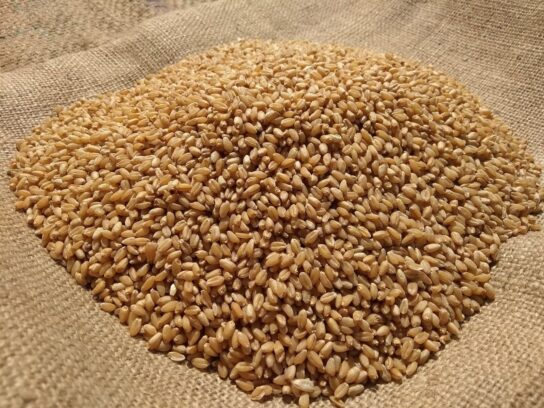- Your gateway to the Maritime Knowledge!
- [email protected]
Latest maritime technologies in the Marine World

Grain Stability Calculation theory and drawing Grain Stability Curve
April 4, 2020In conversation with covid-19 to have long lasting effects on shipping
April 20, 2020The number of new regulations, requirements and conventions, that was encountered by the Maritime Industry in the last 10 years clearly shows the technological evolution which the Shipping industry underwent. This post discusses the Latest Maritime technologies in the Marine World.
It would be reasonable to believe that in the upcoming years the ship industry will undergo a whole new revolution – with advance design concepts, IoT and Artificial Intelligence playing a big role in the process.
The Global Marine Technology Trends- 2030 (GMTT-2030) which has been created by the Lloyd’s Register (LR), alongside QinetiQ and the University of Southampton attempts to answer the question of ‘What’s Next’ in the Maritime ecosystem.
According to LR Marine director, Tom Boardely, “Shipping is likely to evolve quickly now”.
Let us see what new we can expect in the upcoming years –
Application of Nanotechnology to Ship Building Materials
While steel will continue to be the primary building material for the ship’s construction, the modifications will be done at nano-scale level to improve the material characteristics.
This application of nanotechnology can range from using magnesium or calcium particles to strengthen the welds to using advanced high-stregth steel, aluminum, glass fibre and carbon fibre composites. Additionally, research is ongoing on advanced anti-corrosion coating systems to better protect the structure of vessels.
However, the talk of the town is the Self-Repairing materials.
According to Wikipedia, Self-healing materials are artificial or synthetically-created substances which have the built-in ability to automatically repair damages to themselves without any external diagnosis of the problem or human intervention.
Although the most common types of self-healing materials are polymers or elastomers, self-healing covers all classes of materials, including metals, ceramics, and cementitious materials.
A material which can intrinsically correct damage caused by normal usage could prevent costs incurred by material failure and lower costs of a number of different industrial processes through longer part lifetime, and reduction of inefficiency caused by degradation over time. <source: Wikipedia.org>
Newly developed materials will not only make the vessel lighter but also maintenance economical adding to the fuel economy.
Use of Data Analytics
Data analytics is the science of analyzing raw data in order to make conclusions about that information. This information can then be used to optimize processes to increase the overall efficiency of a business or system. <source: Investopedia>
In Maritime Ecosystem, huge amount of data is collected through various sources such as investigation, oceanographical, meteorological and personal data. The data obtained can be processed and applied to the shipping industry in the required manner. This means that when a correlation between the data and current situation is observed – the required algorithms can be implemented.
The biggest threat to this, however is the data theft or a cyber attack. Time and again the data banks have been subjected to malware attacks and cyber-theft. Recent case of MSC closing undergoing a suspected Cyber attack can be read here.
Wireless monitoring through sensors
Extensive use of sensors will aid the Shipowners to ensure an effective maintenance of the vessel through continuous condition monitoring of an equipment. The data will be able to be remotely transferred in real time resulting in effective supervision of the vessel’s critical system and condition in whole.
Internet Connectivity
Research in ongoing in order to ensure the ship is a fully connected ship – providing real time data to the people sitting ashore by means of 5G data. Connectivity onboard, is still a problem, owing to limited speed and affected by weather and other reasons. Crew welfare will substantially improve too. Additionally, it will aid in a quick decision making by reducing the need for a physical inspection and/or survey.
Means of Propulsion
GMTT 2030 described the challenges in this area as twofold – environmental and commercial including the rising fuel costs and fleet overcapacity.

Climate change is another aspect which is the hot topic and IMO is striving hard to achieve such goals.
Alternative fuels, energy-saving devices, renewable energy and hybrid power generation will be playing an important role. Hydrogen fuel cells, in near future, will be the game changer.
Welcome ‘Technomax’
The scenarios in GMTT 2030 – dubbed Technomax – are “about technology uptake”, says Nick Brown, brand and external relation manager at LR.
As an example, a Technomax LNG carrier will be built from advanced materials such as graphene to make the vessel lighter, while graphene sensors detect traces of pollutants and emissions.
A Technomax container ship in 2030 is envisioned to have on-board data analytics machines, connected to onshore decision-support systems, which will manage maintenance, navigation and communications, enabling it to be a ‘smart’ ship.
There is also talk of a bulk carrier using hybrid LNG marine diesel fuels mixed with biofuels as its main drive for propulsion.
So, the question arises where are we heading? Is the era of Autonomous ships coming soon? Do share your valuable comments below.



